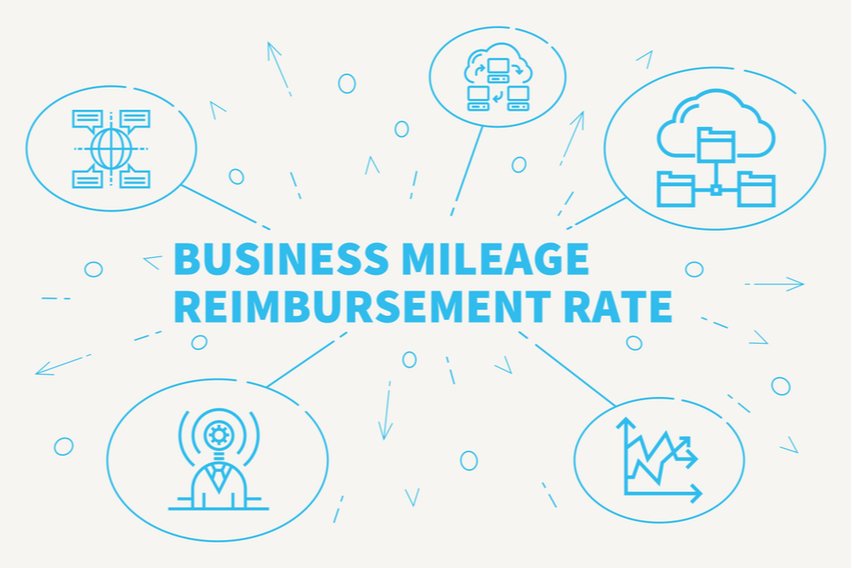What is Medical Mileage Rate Deduction?

Have you ever been reimbursed for business mileage? Did you know you can also get reimbursed for medical mileage?
Have you ever had to go somewhere and been able to receive a rate reduction on the mileage you used to get there? It’s common in business to get reimbursed a certain amount of cents per dollar you drive. But mileage deductions can get used in a few other areas as well.
Aside from business use, you might be entitled to mileage reimbursement for a certain medical expense or moving purposes. When it comes to medical mileage rate deductions, it can include things like trips to the doctor and other hospital or dental visits. Now, since medical needs can vary broadly, the IRS created a list of approved deductibles for medical purposes.
Here is everything you need to know about medical mileage rate deduction!
Here’s What We’ll Cover:
What You Can Save With Medical Mileage Rates
What Can’t You Use Medical Mile Rates For?
How to Calculate Your Medical Mileage Deduction
What You Can Save With Medical Mileage Rates
There are tons of reasons for someone to go to the doctor, so the government created a list of which ones qualify for medical mileage reimbursement. You can search the IRS website for the list of deductible medical mileage. But the standard mileage rate to use your car, pickup truck or van is 16 cents per mile driven if it’s specifically for medical or moving needs.
A number of the deductible medical expenses are usually ones not already covered by your employer if you have a health insurance plan. They can include things like diagnosis, treatments, cures and prevention. But while you can save a lot from some medical deductible costs, the rates are subject to adjusted gross income limitations.
You are also able to include any transportation expenses that are essential to your medical care needs. So if you need to take the bus or a taxi to get where you need to go, you can include those costs. Transportation costs can also get covered under deductible mileage if you need to accompany a child to their appointment.

How Do Adjusted Gross Income Limitation Rates Work?
It basically means that the total amount you get reimbursed for medical services can’t go over a certain amount. That amount has to do with your adjusted taxable income and it also takes into account your age.
There then becomes two separate rate categories:
- The first one is for people who are employed and no older than 65 years of age with a threshold of 7.5 %
- The second is for people who are older than the age of 65 and the threshold is 10%
What Can’t You Use Medical Mile Rates For?
While there is a lot that you can get covered when it comes to medical mileage rates, there are some things that you won’t get covered for. General health checkups aren’t part of the approved deductible list. For example, if you just decided to visit the doctor for a quick checkup, it wouldn’t accumulate towards your medical mileage.
How to Calculate Your Medical Mileage Deduction
There are two different things that you need to calculate your medical mileage deduction. The first is any actual out-of-pocket expenses that you had for things like gas or parking fees. The second is the expenses you can include for your medical deduction.
You can use the rate of 16 cents per mile to calculate your medical mileage. And then add that to the total expenses that you had. Just make sure to keep track of things like gas prices and keep documentation of any expenses.
For example, let’s say Roger drove 100 miles for medical treatment. He had to spend $40 on gas to get there and another $10 on parking. That means he had $50 in actual expenses. You can then multiply the 100 miles he had to drive to get there by the 16 cents per mile rate.
100 miles x 16 cents = $16
Add that to the actual expenses and Roger has a total of $66 that he can claim as a medical mileage rate deduction.
If you are making a trip where you will claim for medical mileage reimbursement, make sure to keep an accurate track of your mileage. You should also keep a record of the dates of your medical trips and the places you had to drive to. Plus, having documentation about the purpose of your medical trip will also help in case you need to prove anything.

Key Takeaways
It’s important to be aware that not all medical trips will get covered under the medical mileage rate deduction. If you’re unsure if your trip will get covered or not, check with your employer or take a look online at the list of approved deductibles. That way you will know exactly what you’re able to claim.
Depending on how your employer has it set up, it might be worth looking into whether or not a medical mileage rate deduction is worth it. If you only visit the doctor once or twice a year you might not reach the adjusted gross income percentage. However, if you frequently visit the doctor for things like chronic illnesses for example, then the cost of mileage associated can add up.
No matter what your situation is, it can also be worth checking with your employer to find out more about how they cover medical mileage rates. The only real challenge you have is finding out if what you need to see the doctor for is a covered service or a business expense. Keep track of the personal mileage you drive and have any documentation handy just in case you need it.
Enjoy reading this guide? Head over to our resource hub for more great content!
RELATED ARTICLES

 What are Payroll Expenses? A Complete Payroll Expense Guide
What are Payroll Expenses? A Complete Payroll Expense Guide How to Calculate Mileage Reimbursement for Taxes
How to Calculate Mileage Reimbursement for Taxes What Is Company Car Allowance & How Does It Work
What Is Company Car Allowance & How Does It Work How to Calculate Gas Mileage in the Right Way
How to Calculate Gas Mileage in the Right Way IRS Mileage Rates: 2025 Guide for the Self-Employed
IRS Mileage Rates: 2025 Guide for the Self-Employed